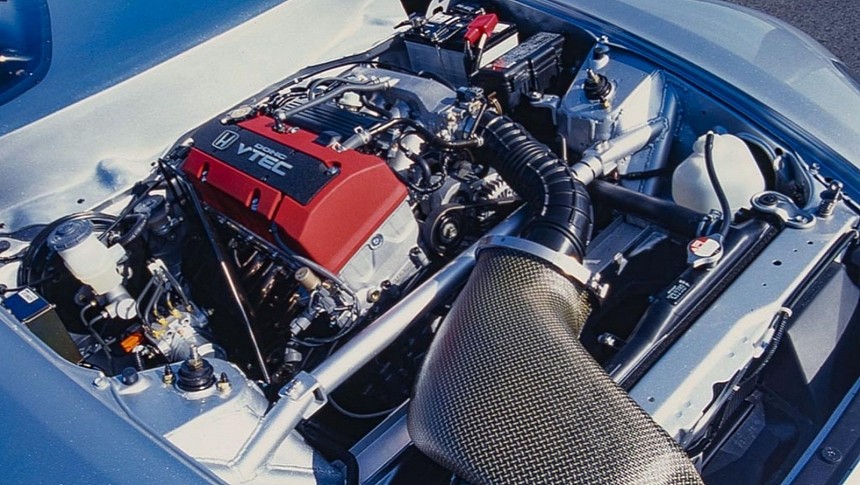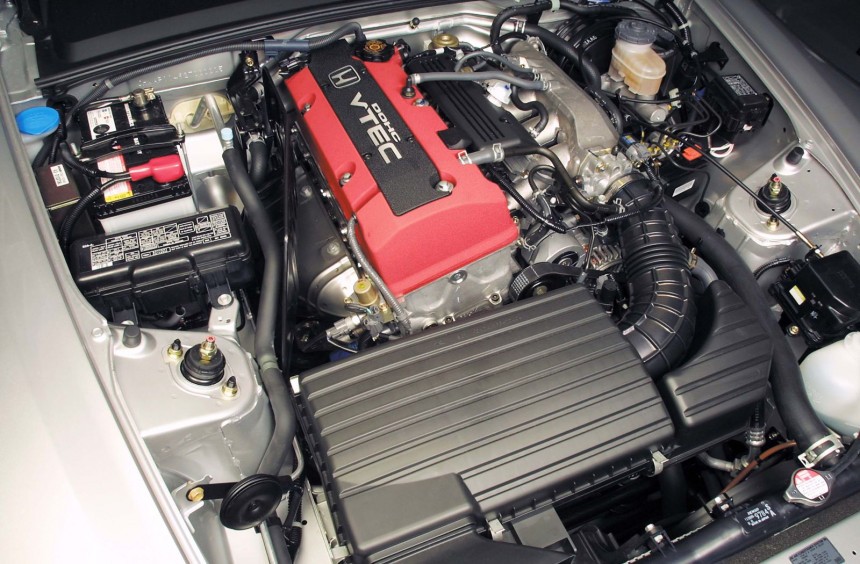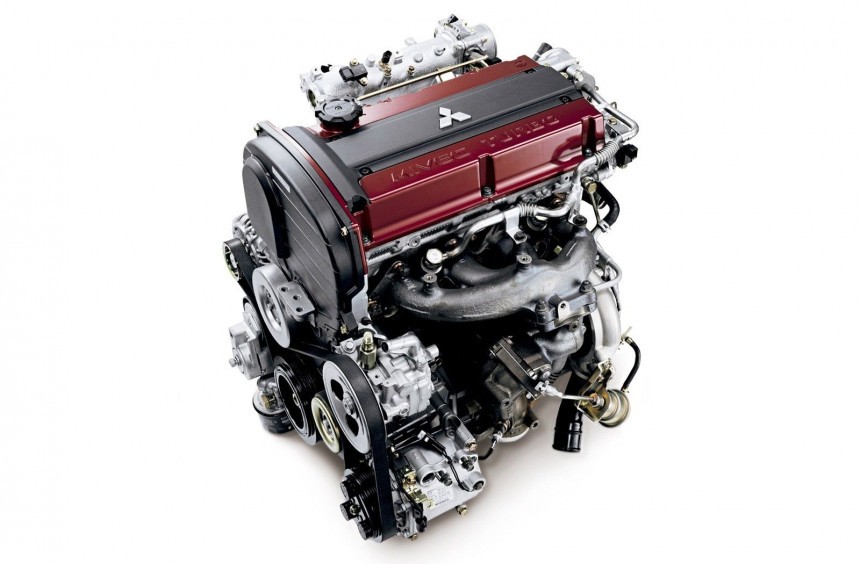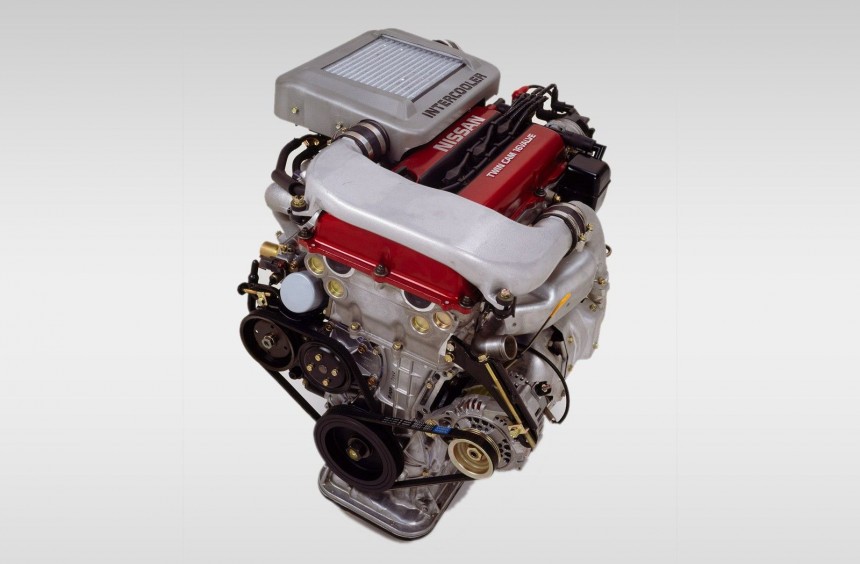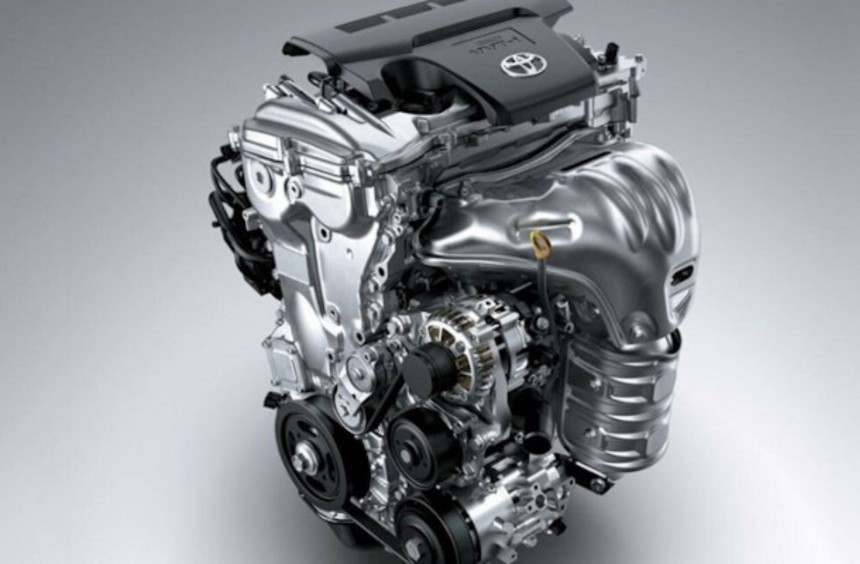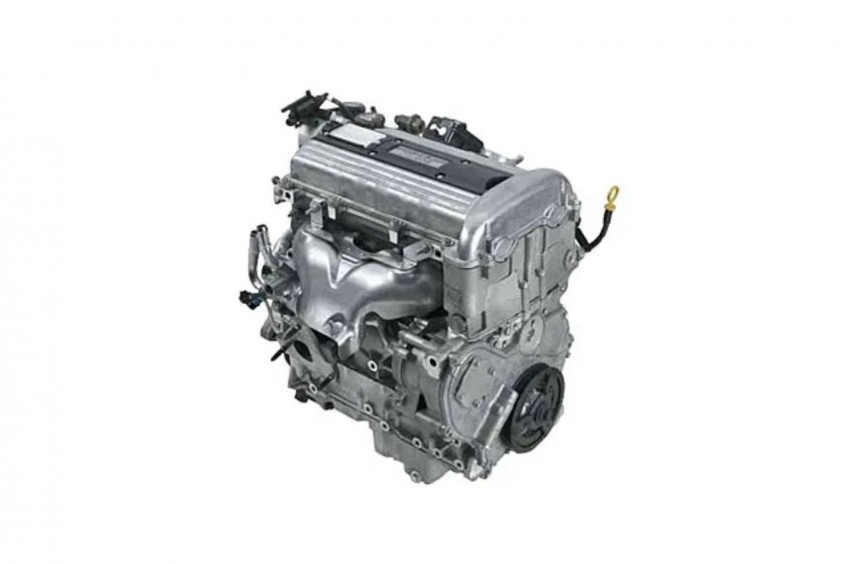Often ridiculed by many gearheads, four-cylinder engines can be as potent as those with twice as many cylinders.
Four-cylinders were among the first types of internal combustion engines used in the early stages of automotive development. Then, when carmakers wanted to make more power, their engineers started developing powerplants with six, eight, ten, twelve, and in some cases, sixteen cylinders.
Today, when an enthusiast talks about a high-performance engine, a V8, V10, or V12 is usually the main subject of the conversation. However, four-cylinders have proved they can hang with the big boys on the road and the track countless times.
Though highly potent, factory-built fours are out there, the tuning world has shown that this type of engine can be modified to produce impressive output figures. So, on that note, let's take a look at five awesome tuner-friendly four-cylinders.
For decades, Honda has been building some of the most impressive four-cylinders that the automotive industry has ever seen. It all started in the late 1980s with the B16, the engine that brought VTEC to the world.
Then, at the dawn of the new millennium, the Japanese manufacturer introduced a new four-cylinder legend under the hood of the S2000 roadster. Codenamed F20C, the 2.0-liter could make up to 247 hp but more impressive, it could rev up to 9,000 rpm in stock form. In 2009, it was followed up by a larger, US-exclusive 2.2-liter version called F22C, which was limited to 240 hp to keep emissions at bay.
While the stock output figures were nothing special, that high rev limit hinted that the engine could easily handle more. Enthusiasts started tinkering with it and soon discovered it could deliver obscene amounts of power.
Currently, there's a wide range of aftermarket offerings for this engine. With just an ECU remap, some bolt-on components, and a turbocharger kit, it can easily deliver close to 400 hp. If that's not enough, you can add a stroker kit, aftermarket cams, and high-compression pistons, then upgrade the cooling and fuel delivery systems, and you'll get around 600 hp on top of supreme reliability.
In 1981, Mitsubishi introduced a sportier version of its compact Lancer sedan and tucked under its hood was a new naturally aspirated four-cylinder dubbed 4G63. However, this engine would become legendary in turbocharged form (hence the T) as the beating heart of the first nine rally-bred Lancer Evolution generations.
Built around a bombproof cast-iron block, it displaced 2.0 liters throughout its lifespan and, depending on the model year, it could punch out between 244 and 287 hp. In addition, several special edition Evolution models in the UK received extensive modifications from factory-backed tuners, so their engines could make even more power. The most potent of these 4G63T-powered Evos was the Evo IX FQ-400, rated at 405 hp.
This leads us to the tuning potential of this mighty four-cylinder which is virtually limitless. Combining a good remap with a bigger turbo and some aftermarket bolt-ons, you can easily extract around 300 to 400 hp out of this four-pot. Go a few steps further by adding high-performance aftermarket internals, and you'll have no problem turning this tiny engine into an 800-hp monster.
In 1989, Nissan unleashed the R32 Skyline GT-R on public roads, and with it came one of the most iconic six-cylinders of all time: the RB26DETT. That year the Japanese carmaker also released a new four-cylinder that was equally impressive and mounted it transversally in the U12 Bluebird 2000SSS ATTESA (It's a mouthful, I know.)
Codenamed SR20DET, the new engine was a 2.0-liter, all-aluminum turbocharged unit designed with performance and reliability in mind. It went on to power many Nissan models, most notably the S13 and S15 generations of the Silvia and 180SX, where it was mounted longitudinally.
The engine was not particularly special in stock form, making anywhere from 200 to 247 hp, depending on the model. But, with a solid architecture, it had huge tuning potential, which was thoroughly exploited by the drifting community.
As with the previous entries on our list, the SR20DET benefits from a wide range of aftermarket components designed to harness that huge potential.
Suppose you want to get close to 400 ponies from Nissan's legendary inline-four. In that case, all you have to do is tune the ECU, add higher-flow injectors, larger valve springs, hotter cams, and a bigger turbo with an aftermarket cooling system. But then again, it can handle more, so boring out the block, adding forged pistons, rods, and a twin-turbo system to the upgrades listed above will get you very close to 1,000 hp.
When it comes to engine tuning, Toyota is synonymous with one digit and two letters: 2JZ. But the six-cylinder superstar that made the A80 Supra iconic isn't the only highly-tunable powerplant in the Japanese manufacturer's arsenal.
Introduced in 2008 with the North American version of the facelifted third-gen RAV4 and subsequently available in other models, including the Camry, the 2AR-FE was an all-aluminum, naturally-aspirated DOHC 2.5-liter. It had little to do with performance in stock form, making from 169 to 180 hp, but like other great engines made by Toyota, it was extensively overengineered to guarantee unrivaled reliability.
Of course, all that overengineering means it can handle more power than it makes in factory spec. The first and most critical upgrade is a forced induction system which can include a turbo or a supercharger. This mod, plus an aftermarket exhaust system and a good ECU tune, will be enough to unlock around 300 hp.
More extensive tuning, including performance cams, forged internals, a revamped fuel delivery system, and head porting, will enable the 2.5-liter to spit around 600 hp on the stock block. Best of all, a 2AR-FE is very cheap, so it's an excellent choice for a budget build.
Before you start throwing rocks at your screen and cussing me out, this isn't a top 5 of the most tunable engines, but rather five four-cylinders with great tuning potential that are awesome.
So what makes the Gen II Ecotec awesome? Well, for starters, it was built in the US, where people believe inline fours are for lawnmowers. Moreover, it's incredibly cheap, and - this may surprise you - it has great tuning potential.
The first 2.2-liter Ecotec was introduced in 2000, and seven years later, it was extensively improved around the higher-strength Gen II block. The 2.2-liter was available in three versions (L61, LAP, LE8) with minor differences between them. It powered forgettable models like the Saturn Ion, Chevy Malibu, HHR, Cobalt, and the latter's Pontiac-badged sibling, the G5. Even less impressive, it (barely) made 160 hp in its most potent form.
But it turns out that higher-strength Gen II block and surprisingly sturdy internals proved very tuner-friendly. Adding a forced induction system, performance cams, and a few other inexpensive upgrades, including that all-important ECU remap, can get you around 350 to 400 hp. Furthermore, if you have the money, more comprehensive mods can turn it into a quarter-mile king capable of over 1,000 hp
So if you're looking for a cheap, lightweight American four-cylinder that can help you humiliate your rich friends and their V8-powered muscle cars, look no further than the 2.2-liter Ecotec.
Today, when an enthusiast talks about a high-performance engine, a V8, V10, or V12 is usually the main subject of the conversation. However, four-cylinders have proved they can hang with the big boys on the road and the track countless times.
Though highly potent, factory-built fours are out there, the tuning world has shown that this type of engine can be modified to produce impressive output figures. So, on that note, let's take a look at five awesome tuner-friendly four-cylinders.
Honda F20C/F22C1
Then, at the dawn of the new millennium, the Japanese manufacturer introduced a new four-cylinder legend under the hood of the S2000 roadster. Codenamed F20C, the 2.0-liter could make up to 247 hp but more impressive, it could rev up to 9,000 rpm in stock form. In 2009, it was followed up by a larger, US-exclusive 2.2-liter version called F22C, which was limited to 240 hp to keep emissions at bay.
While the stock output figures were nothing special, that high rev limit hinted that the engine could easily handle more. Enthusiasts started tinkering with it and soon discovered it could deliver obscene amounts of power.
Currently, there's a wide range of aftermarket offerings for this engine. With just an ECU remap, some bolt-on components, and a turbocharger kit, it can easily deliver close to 400 hp. If that's not enough, you can add a stroker kit, aftermarket cams, and high-compression pistons, then upgrade the cooling and fuel delivery systems, and you'll get around 600 hp on top of supreme reliability.
Mitsubishi 4G63T
Built around a bombproof cast-iron block, it displaced 2.0 liters throughout its lifespan and, depending on the model year, it could punch out between 244 and 287 hp. In addition, several special edition Evolution models in the UK received extensive modifications from factory-backed tuners, so their engines could make even more power. The most potent of these 4G63T-powered Evos was the Evo IX FQ-400, rated at 405 hp.
This leads us to the tuning potential of this mighty four-cylinder which is virtually limitless. Combining a good remap with a bigger turbo and some aftermarket bolt-ons, you can easily extract around 300 to 400 hp out of this four-pot. Go a few steps further by adding high-performance aftermarket internals, and you'll have no problem turning this tiny engine into an 800-hp monster.
Nissan SR20DET
Codenamed SR20DET, the new engine was a 2.0-liter, all-aluminum turbocharged unit designed with performance and reliability in mind. It went on to power many Nissan models, most notably the S13 and S15 generations of the Silvia and 180SX, where it was mounted longitudinally.
The engine was not particularly special in stock form, making anywhere from 200 to 247 hp, depending on the model. But, with a solid architecture, it had huge tuning potential, which was thoroughly exploited by the drifting community.
As with the previous entries on our list, the SR20DET benefits from a wide range of aftermarket components designed to harness that huge potential.
Suppose you want to get close to 400 ponies from Nissan's legendary inline-four. In that case, all you have to do is tune the ECU, add higher-flow injectors, larger valve springs, hotter cams, and a bigger turbo with an aftermarket cooling system. But then again, it can handle more, so boring out the block, adding forged pistons, rods, and a twin-turbo system to the upgrades listed above will get you very close to 1,000 hp.
Toyota 2AR-FE
Introduced in 2008 with the North American version of the facelifted third-gen RAV4 and subsequently available in other models, including the Camry, the 2AR-FE was an all-aluminum, naturally-aspirated DOHC 2.5-liter. It had little to do with performance in stock form, making from 169 to 180 hp, but like other great engines made by Toyota, it was extensively overengineered to guarantee unrivaled reliability.
Of course, all that overengineering means it can handle more power than it makes in factory spec. The first and most critical upgrade is a forced induction system which can include a turbo or a supercharger. This mod, plus an aftermarket exhaust system and a good ECU tune, will be enough to unlock around 300 hp.
More extensive tuning, including performance cams, forged internals, a revamped fuel delivery system, and head porting, will enable the 2.5-liter to spit around 600 hp on the stock block. Best of all, a 2AR-FE is very cheap, so it's an excellent choice for a budget build.
GM 2.2 Ecotec (Gen II)
So what makes the Gen II Ecotec awesome? Well, for starters, it was built in the US, where people believe inline fours are for lawnmowers. Moreover, it's incredibly cheap, and - this may surprise you - it has great tuning potential.
The first 2.2-liter Ecotec was introduced in 2000, and seven years later, it was extensively improved around the higher-strength Gen II block. The 2.2-liter was available in three versions (L61, LAP, LE8) with minor differences between them. It powered forgettable models like the Saturn Ion, Chevy Malibu, HHR, Cobalt, and the latter's Pontiac-badged sibling, the G5. Even less impressive, it (barely) made 160 hp in its most potent form.
But it turns out that higher-strength Gen II block and surprisingly sturdy internals proved very tuner-friendly. Adding a forced induction system, performance cams, and a few other inexpensive upgrades, including that all-important ECU remap, can get you around 350 to 400 hp. Furthermore, if you have the money, more comprehensive mods can turn it into a quarter-mile king capable of over 1,000 hp
So if you're looking for a cheap, lightweight American four-cylinder that can help you humiliate your rich friends and their V8-powered muscle cars, look no further than the 2.2-liter Ecotec.
